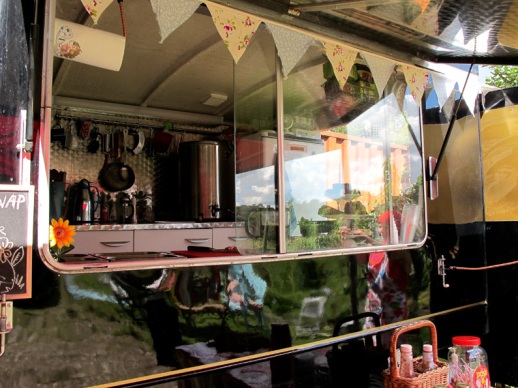
by Nina Walsh
It would appear that folk up at the Gunsite love our pop-up summer kitchen so much that they don’t want it to pop back down again and are prepared to do whatever it takes to keep us running through the winter. We were delighted when the chairman offered us the use of the committee meeting shed as a permanent shelter for the Sunday café, as it would mean less setting up in the early hours of winter darkness, but unfortunately nothing seems to have progressed since the initial suggestion two months ago. We have been itching to start work on the restoration project but apparently, to move the truck onto flat ground and in close enough proximity to the shed, would involve having to first crane one of the shipping containers out to make enough space and then spend rather a lot of money on concrete.
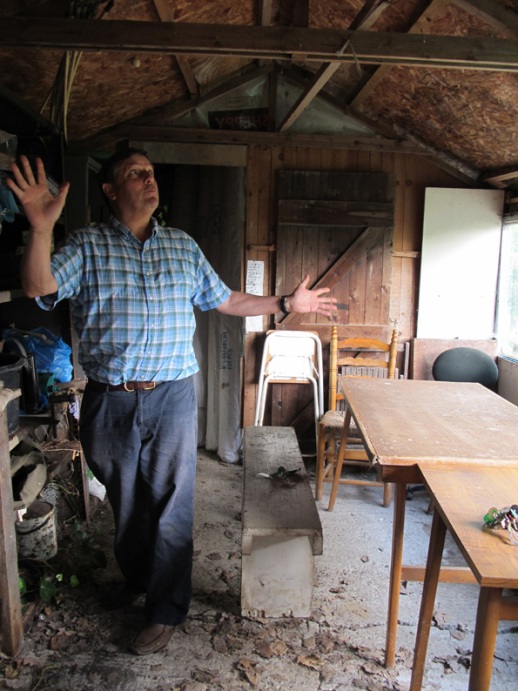
Our faith & hope, however, was once again restored with the return of ex-policeman, Trevor, who recently stepped down as chairman but has now stepped back up again in order to get the job done. With Trevor back on board things seem to be moving ahead with a more logical and practical solution. It will still involve craning one of the containers and also demolishing the existing shed, that we have been so eager to get on with transforming. He is right of course, the shed is rotten and probably inhabited by rats, which is not ideal for our vision of the perfect country diner. To avoid the expensive and not very ecologically sound suggestion of several tons of concrete to level off the ground, Trevor has suggested instead to invest the money in a wooden cabin style structure set on stilts. Genius! With a decked area for al fresco dining and the shipping container out of the way, Fifi the kitchen truck can be driven straight into position on the level space that once sited the rotten old shed, and with the addition of a couple of solar powered lights and a wood burning stove, we should be ready for the chilly winter ahead. Hurrah for Trevor!
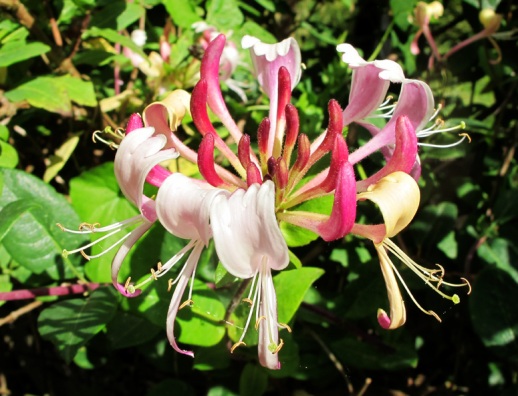
One of the benefits of having jug loads of spent coffee granules each week is that, when tipped onto flower beds, it can help provide an acidic PH in an alkaline environment. This is an act of kindness when applied to the home of the Honeysuckle, which thrives in an acid soil, as you can see from this young woodbine that now sprawls rampantly across the decidedly French smelling ‘Jardin Legrand’, situated directly behind the truck. With its highly perfumed flowers, that waft pleasantly through the open door of the kitchen, it is reassurance that this year’s struggling summer has not yet given up hope.
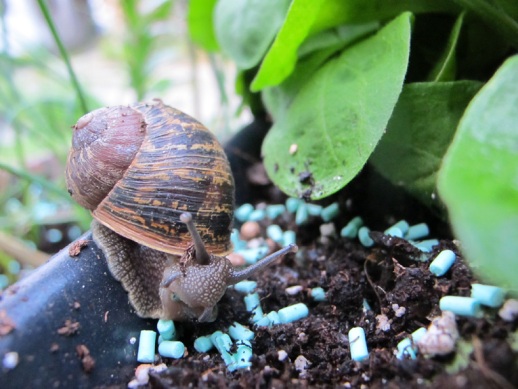
A favourite regular at the Kitchen is Squirrel John. Squirrel John loves trees and eats squirrels. He has even been known to build himself a tree house in order to camp out in and protect a tree from being unnecessarily felled. This, we feel, is commendable.
It was with a modicum of shame and embarrassment on our part that on a recent lunchtime visit to the kitchen, John was alarmed to discover, in his freshly picked and bartered for salad, a slug pellet. We did reassure him that we had washed and prepared the salad and that the chances of actually finding a slug now would be pretty slim. With John’s diet of ethically sourced and unprocessed foods, this did not bring him the comfort he wished for so we decided to investigate the source of the salad to see if the pellet was of the organic variety.
Now, I’m not suggesting that this pellet was planted in John’s salad but it turns out that the trader of said salad, John the poet, had a very similar story to tell after enjoying a portion of Squirrel John’s ‘Squirrel Bourguignon’ at last year’s Allotment Feast, only his pellet was made of lead so I think that makes them about even.
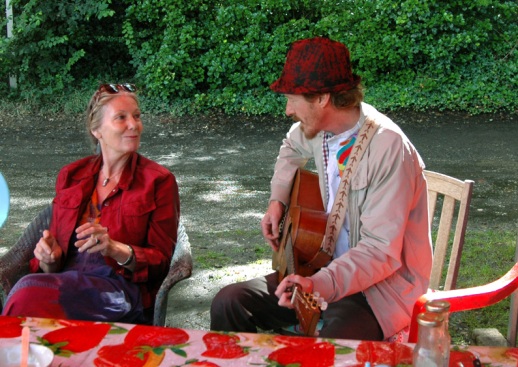
It was with heavy hearts but plenty of laughter that we bid farewell to one of our fellow gardeners this summer, Nicki, who has decided to move to warmer climates. The rain was persistent but the spirits not dampened as once again we were graced with the dulcet tones and beautiful songs of, my now dear friends and musical collaborators, Armorel Weston and John Gibbens. This was shortly followed by a solo rendition of ‘Oh Sir Jasper Do Not Touch Me’ from Nicki with the final cry of ‘Ohhhhhh Sir Jasper!’ being the perfect way to end the party and imprint our hearts with fond memories of a kind and lovely soul.
And to round off this month’s Allotment Kitchen update……
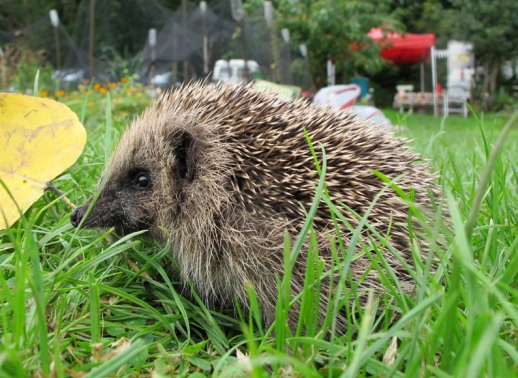
A happy hedgehog! Isn’t he cute?
Mirabelle Plum & Ginger Jam
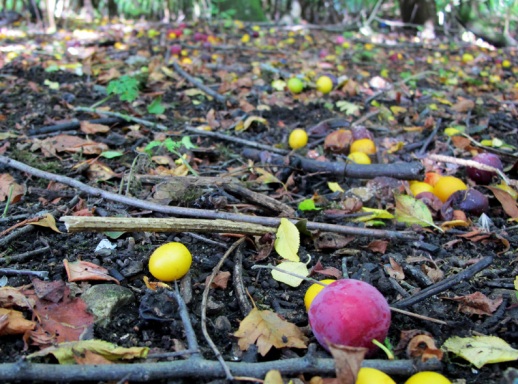
It really is a race against the animals this year to harvest much of nature’s bounty. My own crops produced less than 50% of last year’s, although the Kitchen has taken up a fair amount of my precious gardening time so the plants and I have not had much time to chat. Mould, fungus and slugs have been prolific due to the ridiculous amounts of rainfall, which has left us humans and the wildlife hungry and on the hunt to stock up on nutrients for the coming winter. My, usually abundant, favourite foraging spot was looking woefully sad this year with rotten fruit hanging from what are usually heavy bows of fruitiness. It was my dog, Droogy, who managed to hunt out a small grove of Mirabelle trees that had previously gone unnoticed during my foraging expeditions, where the windfalls alone had literally formed a carpet of red and yellow plums ready for the jam pot. Here is my recipe for Mirabelle & Ginger Jam, which is dead simple as no pectin is required due to the plums heavy pectin content found in the skins.
Ingredients:
1kg ripe Mirabelle plums
1 kg granulated sugar
300ml water
3 tsp grated fresh ginger 6 7oz sterilized jam jars & lids
Method:
Wash the plums and discard any that are damaged.
Place the washed plums and the water into a large, deep saucepan and simmer gently until the plum skins start to split. Use a slotted spoon to remove the stones.
Squeeze the grated ginger to extract the juice and add it to the pot, discarding the fibrous flesh.
Add the sugar and stir gently over a low heat until all the sugar crystals have dissolved.
Turn up the heat and bring the mixture to a rolling boil.
Allow to boil like this for 10 minutes, stirring frequently.
While the jam is rolling, place the washed jam jars, face down, into the oven and let the oven heat to about 160c.
In a small saucepan of water, place the lids and bring to the boil for 5 minutes, after which the lids are ready to use.
After 10 minutes, carefully remove the hot jars from the oven and fill each with jam – do not let them cool, otherwise the heat from the jam will crack them. To do this without burning myself, I use a ladle and a plastic funnel with the long pointy bit chopped off. Works a treat!
Screw the lids tightly onto the filled jars, label and feel very smug about yourself.
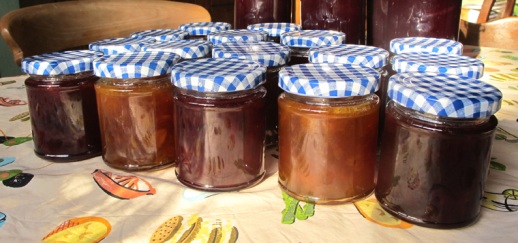
Mrs Bun x